Bihar Switch to Hindi
Maner Sharif
Why in News?
The Bihar Chief Minister attended the 756th Urs of Hazrat Makhdoom Shah Kamaluddin Ahmed Yahya Maneri at Maner Sharif.
- Urs is an annual festival that commemorates the death anniversary of a Sufi saint.
Key Points
- About Maner Sharif:
- It is located in Patna district of Bihar. The old name of this city was Maniyar Mathan which means musical city.
- The town contains the tombs of the Sufi saints Makhdum Yahya Maneri and Makhdum Shah Daulat , known as the Badi Dargah (Great Shrine) and Chhoti Dargah (Small Shrine) .
- Makhdoom Shah Daulat was buried here in 1616, and in 1619, Ibrahim Khan, the ruler of Bihar, constructed a small dargah at the site.
- Urs:
- The annual Urs is organized at the birthplace of Makhdoom Shah in the Maner Dargah complex with the cooperation of the Tourism Department of the Government of Bihar and the District Administration .
Makhdoom Yahya Maneri
- He is also known as Makhdoom-ul-Mulk Bihari and Makhdoom-e-Jahan. He was born in July 1264 AD in Maner, a village near Patna.
- He had a deep understanding of Arabic, Persian, logic, philosophy, religion and Tasawwuf (Sufism).
- His father, Makhdoom Kamaluddin Yahya Maneri bin Israel bin Taj, who belonged to the Firdausi sect, was a Sufi saint of Maner (Palestine), who was a Sufi saint of Maner.
Rajasthan Switch to Hindi
32nd National Convention of Dhakad Samaj
Why in News?
The Chief Minister of Rajasthan addressed the 32nd National Convention of Dhakad Samaj in Kota .
Key Points
- The Chief Minister described the Dhakad community as a community making significant contributions to the overall development of the country and highlighted their history, hard work, and spirit of service .
- He emphasized on the upliftment of farmers, youth and women in the convention .
- The convention was also attended by Lok Sabha Speaker Om Birla, who laid special emphasis on the prosperity and well-being of farmers to take the country forward on the path of progress.
The Dhakad Society
- The Dhakad community is a Hindu peasant Kshatriya caste mainly found in Rajasthan and Madhya Pradesh.
- They are found in the Tonk, Bundi, Kota, Jhalawar, Sawai Madhopur, Chittaurgarh and Ajmer districts of Rajasthan.
- The word 'Dhakad' means one who is not afraid of anyone but faces the circumstances courageously.
- They consider themselves descendants of Balramji (Balram, elder brother of Lord Krishna) .
- They speak Hindi and Devanagari.
Madhya Pradesh Switch to Hindi
Awadhesh Pratap Singh University
Why in News?
Recently the Governor of Madhya Pradesh appointed Dr. Rajendra Kumar Kudaria as the Vice Chancellor of Awadhesh Pratap Singh University Rewa .
Key Points
- About the University:
- It is named after freedom fighter Captain Awadhesh Pratap Singh .
- The university was established on 20 July 1968 and was recognised by the University Grants Commission (UGC) in February 1972 .
- Captain Awadhesh Pratap Singh:
- He was an Indian politician and Indian freedom fighter.
- After Vindhya Pradesh was formed in 1948 following independence, he served as its first Chief Minister from 1948 to 1949.
- Later, he was nominated as a member of the Constituent Assembly.
Rewa district
- It is situated in a part of the Vindhya Plateau of Madhya Pradesh and is irrigated by Tons river and its tributaries.
- Rewa was originally the residence of Gond and Kol tribals.
- Bagheli is a major language in Rewa district .
- Purwa Falls is a 70 m high waterfall situated on the Tons River flowing in Rewa district and Chachai Falls is situated on its tributary (Bihad River) .
Uttar Pradesh Switch to Hindi
Uttar Pradesh Emerges as a Tourism Hub
Why in News?
Uttar Pradesh has emerged as a new hub of tourism by preserving its historical, religious and cultural heritage .
Key Points
- Tourism in Uttar Pradesh:
- Tourism development in Uttar Pradesh is boosting the state's economy and creating jobs for thousands of people.
- More than 65 crore tourists visited Uttar Pradesh in the year 2024, making it the tourism capital of India.
- Religious sites like the Shri Ram Temple in Ayodhya, Kashi Vishwanath Temple in Varanasi, and Mathura-Vrindavan have made Uttar Pradesh a world-class spiritual center.
- Tourism development in Uttar Pradesh is boosting the state's economy and creating jobs for thousands of people.
- Swadesh Darshan 2.0:
- Naimisharanya, Prayagraj and Mahoba are being developed under the Swadesh Darshan 2.0 scheme of the Central Government .
- Importance of Tourism:
- Tourism has become a key engine of economic growth in Uttar Pradesh.
- As one of the fastest-growing sectors, it plays a vital role in boosting trade, creating jobs, attracting investments, enhancing infrastructure, and promoting social inclusion.
Swadesh Darshan Scheme
- It was launched in 2014-15 for integrated development of theme-based tourist circuits — Buddhist Circuit, Coastal Circuit, Desert Circuit, Eco Circuit, Heritage Circuit, Northeast Circuit, Himalayan Circuit, Sufi Circuit, Krishna Circuit, Ramayana Circuit, Rural Circuit, Spiritual Circuit, Tirthankar Circuit, Wildlife Circuit and Tribal Circuit.
- It is 100% centrally funded and efforts are made to achieve convergence with other schemes of Central and State Governments and also to leverage the voluntary funding available for Corporate Social Responsibility (CSR) initiatives of Central Public Sector Undertakings and Corporate Sector.
- Swadesh Darshan 2.0:
- It is not an incremental change but a generational shift to evolve the Swadesh Darshan Scheme as a holistic mission to develop sustainable and responsible tourism destinations.
- It will help develop sustainable and responsible destinations with a tourist and destination centric approach.
Chhattisgarh Switch to Hindi
NCST Survey on Tribal Displacement
Why in News?
The National Commission for Scheduled Tribes (NCST) has directed the governments of Telangana, Maharashtra, Andhra Pradesh, and Odisha to conduct surveys to identify the exact number of tribal people displaced from Chhattisgarh due to Maoist violence and now living in difficult conditions in neighboring states.
Key Points
- Identification of Displaced Tribal People:
- The panel emphasized the need to determine the exact number and locations of displaced tribal people in Telangana, Andhra Pradesh, Odisha, and Maharashtra to plan the next course of action effectively.
- Coordination for Survey and Data Compilation:
- The NCST directed the Chhattisgarh government to appoint a nodal officer to coordinate with the governments of Telangana, Andhra Pradesh, Odisha, and Maharashtra for conducting the surveys.
- After collecting data from these states, the Chhattisgarh government must compile a consolidated report and submit it to the NCST for further action.
- Petition Highlighting the Issue:
- The commission received a petition in March 2022, stating that members of the Gottikoya community, who fled Chhattisgarh in 2005 due to violence between Maoist guerrillas and Indian security forces, are facing severe hardships in their new locations.
- Estimated Number of Displaced Tribals:
- Tribal rights activists estimate that around 50,000 tribals were displaced from Chhattisgarh due to left-wing extremism.
- They are currently residing in 248 settlements in the forests of Odisha, Andhra Pradesh, Telangana, and Maharashtra.
- Land Reclamation and Displacement Concerns:
- Reports indicate that the Telangana government has reclaimed land from internally displaced people (IDPs) in at least 75 settlements, endangering their livelihoods and making them more vulnerable.
- The commission, citing the petition, noted allegations that forest department officials demolished IDPs’ homes and destroyed their crops.
National Commission for Scheduled Tribes (NCST)
- About:
- NCST was set up in 2004 by amending Article 338 and by inserting a new article 338A in the Constitution through the 89th Constitution Amendment Act, 2003. Hence, it is a constitutional body.
- By this amendment, the erstwhile National Commission for Scheduled Castes and Scheduled Tribes was replaced by two separate Commissions namely:
- the National Commission for Scheduled Castes (NCSC), and the National Commission for Scheduled Tribes (NCST)
- Objective:
- Article 338A inter-alia gives powers to the NCST to oversee the implementation of various safeguards provided to Scheduled Tribes (STs) under the Constitution or under any other law for time being in force or under any other order to the Government and to evaluate the working of such safeguards.
- Composition:
- It consists of a Chairperson, a Vice-Chairperson and 3 other Members who are appointed by the President by warrant under his hand and seal.
- At least one member should be a woman.
- The Chairperson, the Vice-Chairperson and the other Members hold office for a term of 3 years.
- The Chairperson has been given the rank of Union Cabinet Minister, the Vice Chairperson has the rank of a Minister of State and other Members have the rank of Secretary to the Government of India.
- The members are not eligible for appointments for more than two terms.
Gotti Koya Tribe
- About:
- Gotti Koya are one of the few multi-racial and multi-lingual tribal communities in India.
- They live in the forests, plains, and valleys on both sides of the Godavari River, in the states of Andhra Pradesh, Telangana, Chhattisgarh, and Odisha.
- They are said to have migrated to central India from their original home in Bastar, northern India.
- Language:
- The Koya language, also called Koyi, is a Dravidian language. It is closely related to Gondi and has been strongly influenced by Telugu.
- Most Koyas speak either Gondi or Telugu, in addition to Koyi.
- Occupation:
- Traditionally, they were pastoralists and shifting cultivators, but now-a-days, they have taken to settled cultivation supplemented by animal husbandry and seasonal forest collections.
- They grow Jowar, Ragi, Bajra, and other millets.
- Society and Culture:
- All Gotti Koya belong to one of five subdivisions called gotrams. Every Gotti Koya is born into a clan, and he cannot leave it.
- They have a patrilineal and patrilocal family. The family is called "Kutum". The nuclear family is the predominant type.
- Monogamy is prevalent among the Koyas.
- They practice their own ethnic religion, but also worship a number of Hindu gods and goddesses.
- Many Gotti Koya deities are female, the most important being the "mother earth."
- They maintain community funds and grain banks at the village level to help the needy families and provide food security.
- They either bury or cremate the dead. They erect menhirs in memory of the dead.
- Their main festivals are Vijji Pandum (seeds charming festival) and KondalaKolupu (festival to appease Hill deities).
- They perform a robust, colourful dance called Permakok (Bison horn dance) during festivals and marriage ceremonies.
Chhattisgarh Switch to Hindi
Maoism to be Eradicated by 2026
Why in News?
Union Home Minister Amit Shah stated that the government will eradicate "Naxals" by 31st March 2026, ensuring that no citizen loses their life due to the insurgency.
Key Points
- Bijapur Operation:
- The Home Minister highlighted that security forces achieved a significant victory in Bijapur, Chhattisgarh, by eliminating 31 Maoists and recovering a large cache of arms and explosives.
- Chhattisgarh Chief Minister affirmed that Maoism in the country and the state will come to an end.
- It is also emphasized that efforts are underway to remove Improvised Explosive Device (IEDs) laid by Maoists and to provide essential infrastructure, including schools, hospitals, roads, water supply, anganwadis, and mobile towers, across the Bastar region.
- Maoist Casualties in 2024:
- According to police records, security forces neutralized 219 Maoists in separate encounters in Chhattisgarh.
Maoism
- About:
- Maoism is a form of communism developed by Mao Tse Tung. It is a doctrine to capture State power through a combination of armed insurgency, mass mobilization and strategic alliances.
- Mao called this process, the ‘Protracted People's War’, where the emphasis is on ‘military line’ to capture power.
- Maoism is a form of communism developed by Mao Tse Tung. It is a doctrine to capture State power through a combination of armed insurgency, mass mobilization and strategic alliances.
- Maoist Ideology:
- The central theme of Maoist ideology is the use of violence and armed insurrection as a means to capture State power.
- ‘Bearing of arms is non-negotiable’ as per the Maoist insurgency doctrine.
- The central theme of Maoist ideology is the use of violence and armed insurrection as a means to capture State power.
- Indian Maoists:
- The largest and the most violent Maoist formation in India is the Communist Party of India (Maoist) formed in 2004.
- The CPI (Maoist) and its front organizations were banned under the Unlawful Activities (Prevention) Act, 1967.
- Front Organizations are the off-shoots of the parent Maoist party, which professes a separate existence to escape legal liability.
Jammu & Kashmir Switch to Hindi
CRPF Chief Reviews J&K Security
Why in News?
The Director General of the Central Reserve Police Force (CRPF) reviewed the security situation and assessed the force's operational preparedness during a two-day visit to the forward areas in Jammu and Kashmir's Rajouri district.
Key Points
- Meeting with Lieutenant Governor:
- The Director General met Lieutenant Governor and briefed him on the force's preparedness for counter-terrorism operations and law-and-order management.
- Interaction with Personnel:
- He visited the newly established Kopra Counter Insurgency camp under the CRPF's 237 Battalion in Kopratop, an area that has experienced significant terror activity over the past four years.
- He also interacted with officers and jawans, listening to their operational experiences and addressing their concerns.
- He emphasized the need for personnel to maintain a strong commitment to duty while also ensuring a healthy work-life balance.
Jammu & Kashmir Switch to Hindi
Water Supply Schemes Inaugurated in J&K
Why in News?
Recently, the Union Minister for Science & Technology inaugurated seven water supply schemes under the Jal Jeevan Mission in Jammu and Kashmir.
Key Points
- Water Supply Schemes:
- The seven newly inaugurated water supply schemes, costing Rs 25.31 crore, will benefit 15,881 people across 2,584 households in 10 villages, including Jasrota, Rakh Hoshyari, Padyari, Saktha Chak, Bhadoli Charpad, and Mangtian.
- A total of 303 water supply schemes, with an estimated cost of Rs 1,369.57 crore, are being implemented in the Kathua district.
- Key Infrastructure Projects:
- The importance of major projects like the Chattergala tunnel and the Delhi to Katra Expressway corridor, were highlighted.
- The importance of the Chattergala tunnel in providing all-weather connectivity between Doda and Lakhanpur.
- He also announced the construction of nine additional underpasses along the Delhi-Amritsar-Katra Expressway, responding to public demand.
- The importance of major projects like the Chattergala tunnel and the Delhi to Katra Expressway corridor, were highlighted.
- Promoting Tourism and Economic Growth:
- The role of tourism in creating employment opportunities and boosting livelihoods, with plans to promote tourism in Basohli and Mantalia.
- The Mansar area in Udhampur district is being developed as a tourist destination under the Swadesh Darshan scheme.
- District Kathua's Economic Potential:
- The district has North India’s first Bio-tech Park, a Seed Processing Plant, and the region's only Homeopathic College.
- He encouraged the youth to take advantage of government subsidies for promoting Khadi to earn their livelihoods.
Jal Jeevan Mission
- About:
- Launched in 2019, it envisages supply of 55 litres of water per person per day to every rural household through Functional Household Tap Connections (FHTC) by 2024.
- JJM looks to create a jan andolan for water, thereby making it everyone’s priority.
- It comes under Jal Shakti Ministry.
- Aims:
- The mission ensures functionality of existing water supply systems and water connections, water quality monitoring and testing as well as sustainable agriculture.
- It also ensures conjunctive use of conserved water; drinking water source augmentation, drinking water supply system, grey water treatment and its reuse.
Swadesh Darshan Scheme
- It was launched in 2014-15 for integrated development of theme-based tourist circuits — Buddhist Circuit, Coastal Circuit, Desert Circuit, Eco Circuit, Heritage Circuit, Northeast Circuit, Himalayan Circuit, Sufi Circuit, Krishna Circuit, Ramayana Circuit, Rural Circuit, Spiritual Circuit, Tirthankar Circuit, Wildlife Circuit and Tribal Circuit.
- It is 100% centrally funded and efforts are made to achieve convergence with other schemes of Central and State Governments and also to leverage the voluntary funding available for Corporate Social Responsibility (CSR) initiatives of Central Public Sector Undertakings and Corporate Sector.
- Swadesh Darshan 2.0:
- It is not an incremental change but a generational shift to evolve the Swadesh Darshan Scheme as a holistic mission to develop sustainable and responsible tourism destinations.
- It will help develop sustainable and responsible destinations with a tourist and destination centric approach.
Jammu & Kashmir Switch to Hindi
Pir Panjal Winter Festival
Why in News?
The Indian Army inaugurated the Pir Panjal Winter Festival in Poonch, marking the beginning of a two-month-long celebration featuring a diverse range of sports and cultural events.
Key Points
- Commitment to Youth and Social Reform:
- It was highlighted that the festival reflects the Army’s strong commitment to youth empowerment, cultural preservation, and social reform, with a particular focus on raising awareness against drug abuse.
- Diverse Sports and Cultural Events:
- Sports: Under-25 boys cricket tournament, Under-25 boys and Under-21 girls volleyball tournament, and an open Kho-Kho tournament for girls.
- Cultural Performances: Gujari and Pahari folk dance performances, music and dance talent hunts, solo and group singing competitions.
- Academic and Creative Competitions: Science and arts exhibitions, painting contests, essay writing, and elocution competitions.
- Impact on Youth and Marginalized Communities:
- The initiative aims to foster sportsmanship, cultural revival, and holistic development, particularly among youth from remote and marginalized communities in Poonch.
Indian Army
- The Indian army originated from the forces of the East India Company, which later became the 'British Indian Army', and eventually, after Independence, the Indian Army.
- The Indian Army was founded almost 126 years ago by the British on 1st April, 1895.
Pir Panjal
- About:
- The Pir Panjal Range is a mountain range in the northern Indian subcontinent.
- It begins in Ramban and extends westward, lying south of Jammu and Kashmir’s Vale of Kashmir, reaching Muzaffarabad District.
- The range rises sharply to an average elevation of over 13,000 feet (4,000 meters).
- It separates the Jammu Hills in the south from the Vale of Kashmir, beyond which lie the Great Himalayas.
- The range separates from the Himalayas near the banks of the Sutlej River.
- It forms a natural divide between the Beas and Ravi rivers on one side and the Chenab River on the other.
- Major Passes:
- The range has six historical passes, Hajipir Pass, Gulabgarh Pass, Ratanpir Pass, Pir Panjal Pass, Banihal Pass, Bairam Gala Pass.
- Important Peaks:
- Deo Tibba (6,001 m) and Indrasan (6,221 m) are two significant peaks at the eastern end of the range.

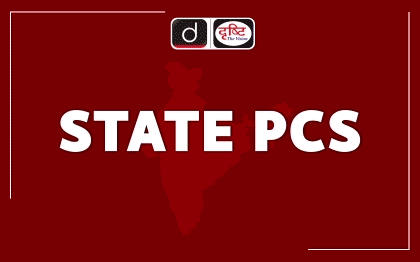


%20MPPCS%202025%20Desktop%20E.jpg)
%20MPPCS%202025%20Mobile%20E%20(1).jpg)

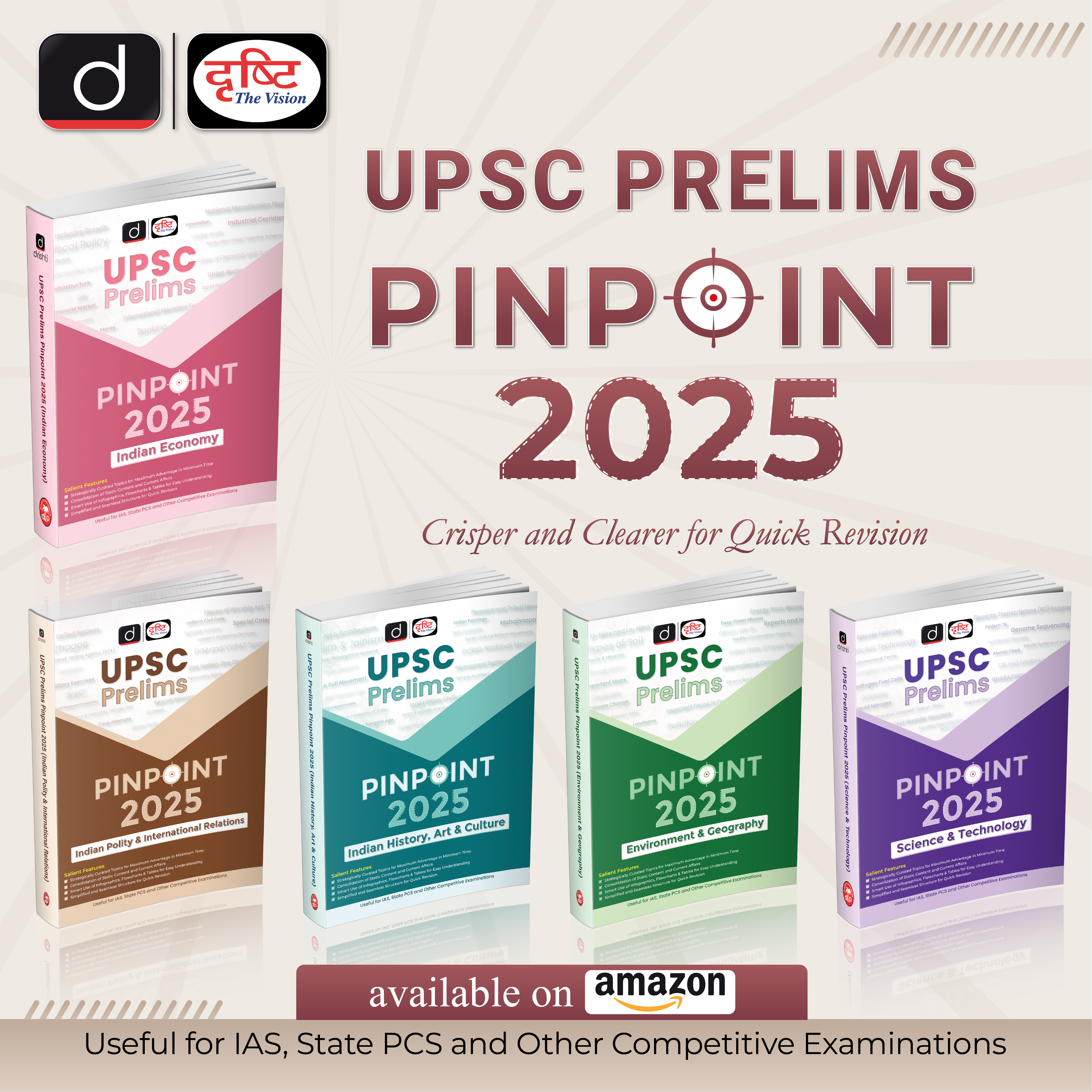







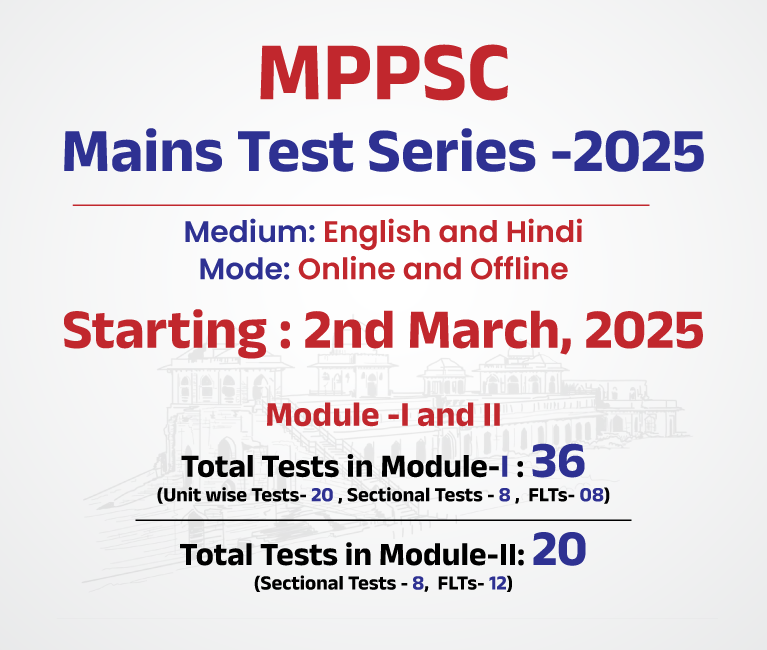
.png)
.png)









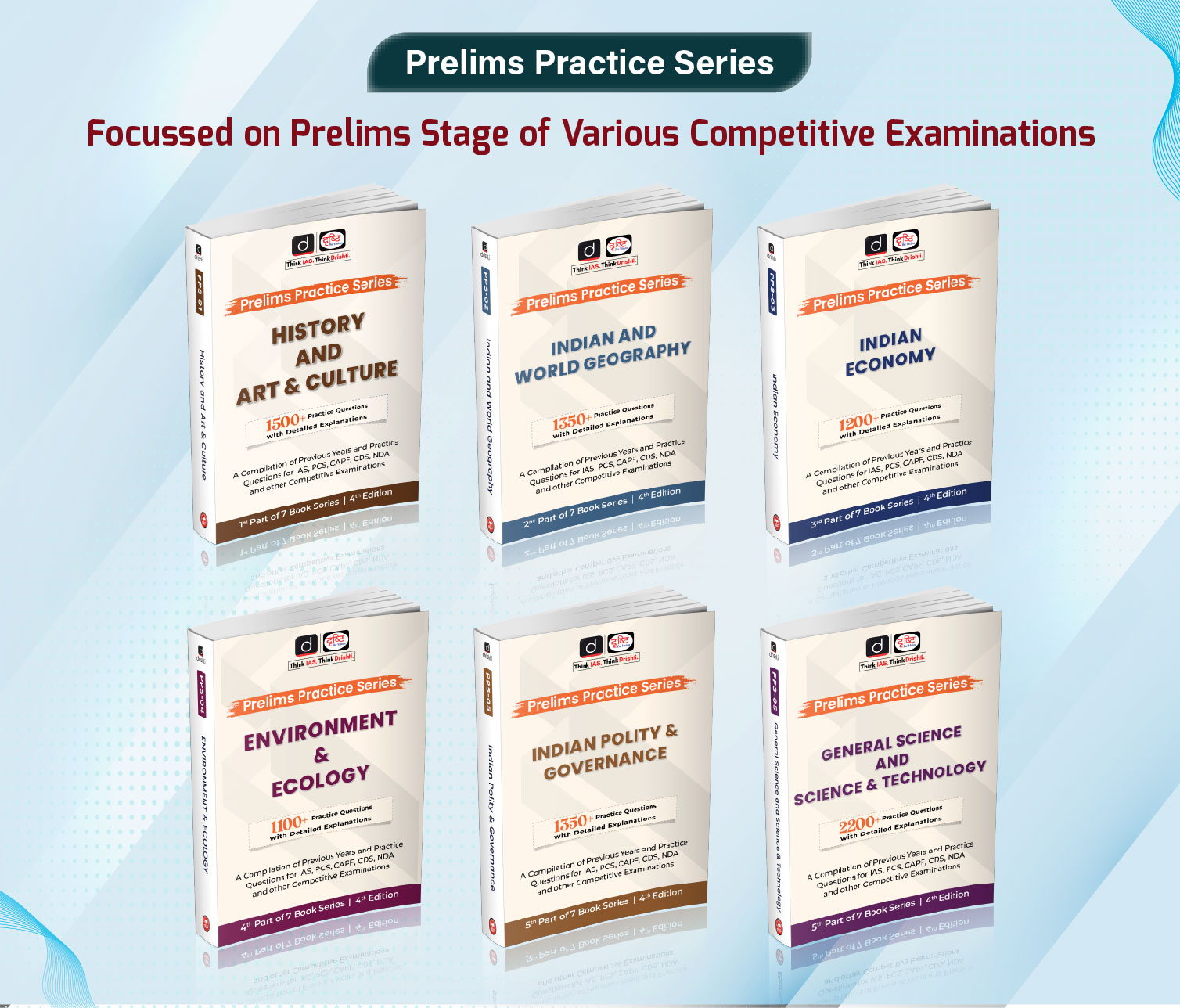

 PCS Parikshan
PCS Parikshan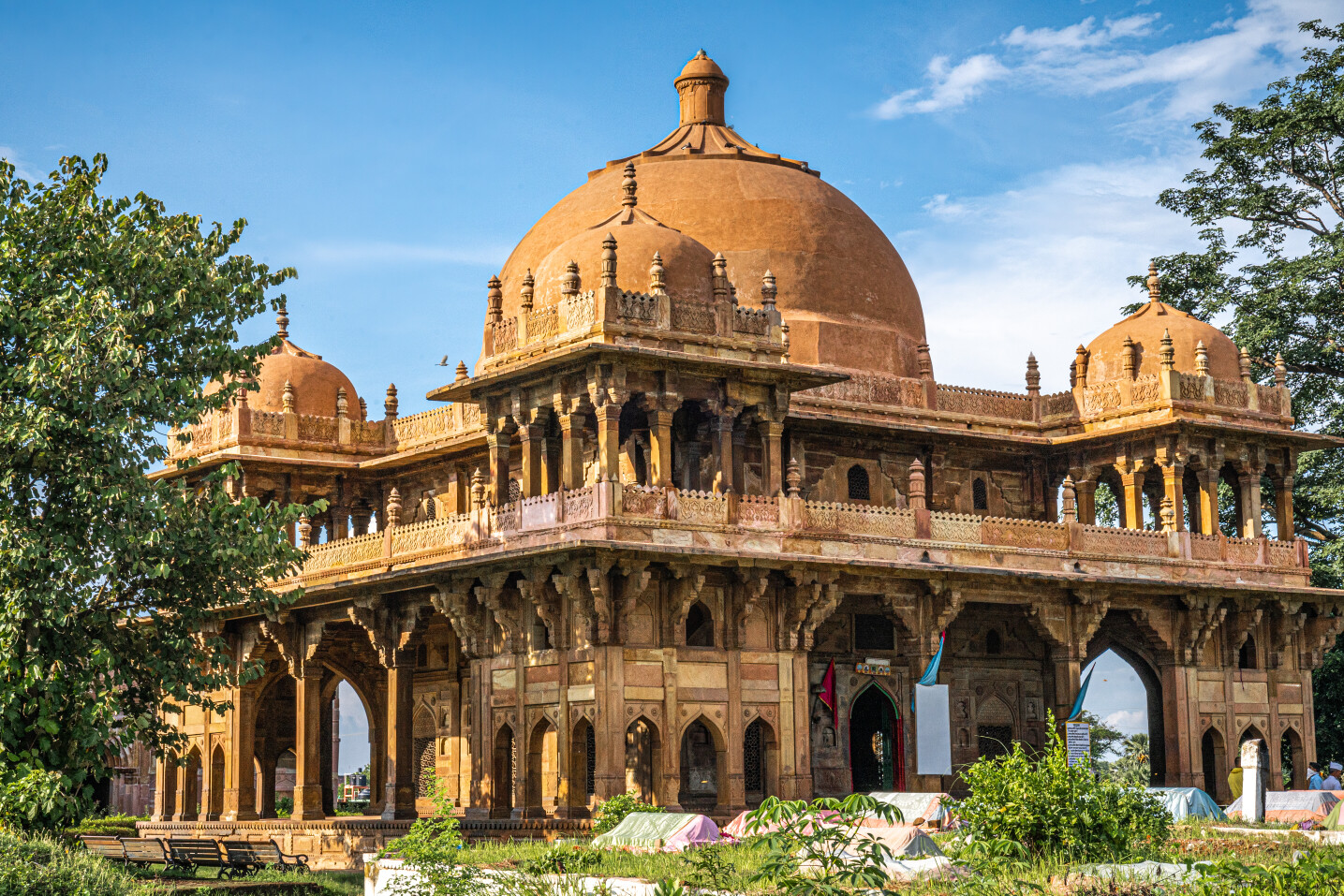
.jpg)
 (1).jpg)
 (1).jpg)
.jpg)
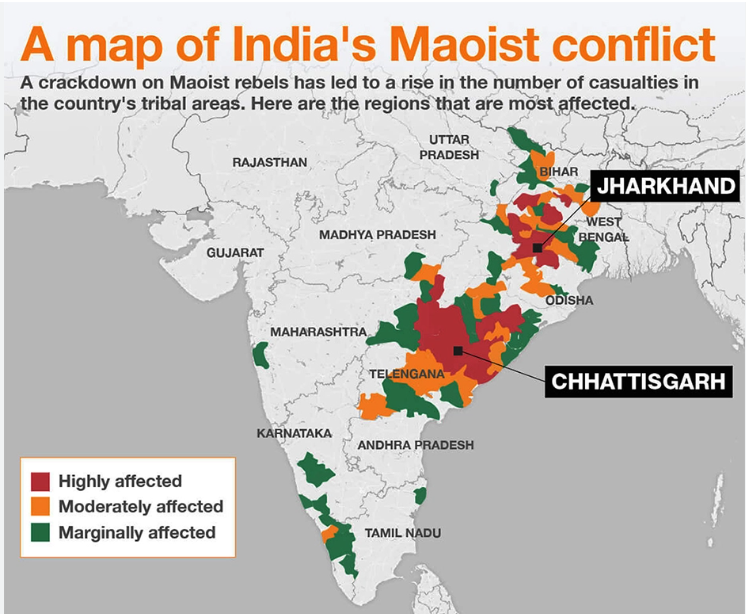
.png)


